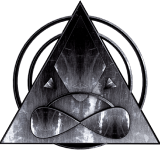Что же можно изучить человеку, не знакомому с темой?
Для начала стоит обратиться к любимой музыке. Вы ее хорошо знаете, но попробуйте взглянуть на любимые композиции иначе.
Попробуйте прослушать любимый трек и понять его форму. Какой инструмент вступает сначала? Какой – продолжает музыкальный рисунок, дополняет его? Как инструменты взаимодействуют?
Заметили, в какой момент инструменты вступают в музыкальный контакт? Смогли «нащупать» тело мелодии, бридж, импровизацию? Чувствуете контраст звучания? Попробуйте зафиксировать свои наблюдения и ощущения на бумаге своими словами.
А теперь представьте, что у вас в руках – не один инструмент, ваш добрый друг ханг, а целый оркестр. Попробуйте услышать в его звучании гитару, бас, перкуссию. В ваших руках – целая палитра выразительных возможностей!
Если в вашем сознании произойдет это разделение звучания на тембры, фактуры, вы сможете понять, как происходит импровизация. Прочувствуете, что значит контраст между этими параметрами, который так важен в музыке.
Для того, чтобы освоить импровизацию на ханге, не обязательно с раннего детства заниматься музыкой, знать нотную грамоту или уметь играть на других инструментах. Изучайте, чувствуйте и пробуйте применять эти новые ощущения на практике. И помните: ничего не получается только у того, кто не пробовал! Начните с малого, и результат не заставит себя ждать.

